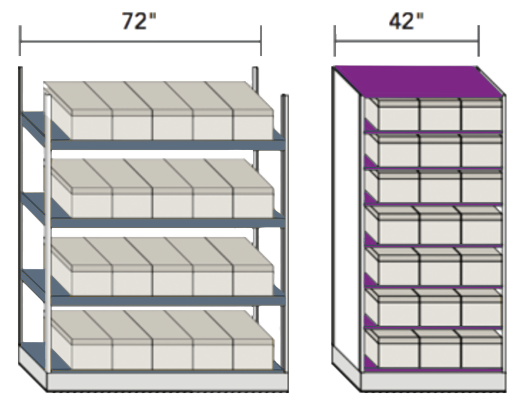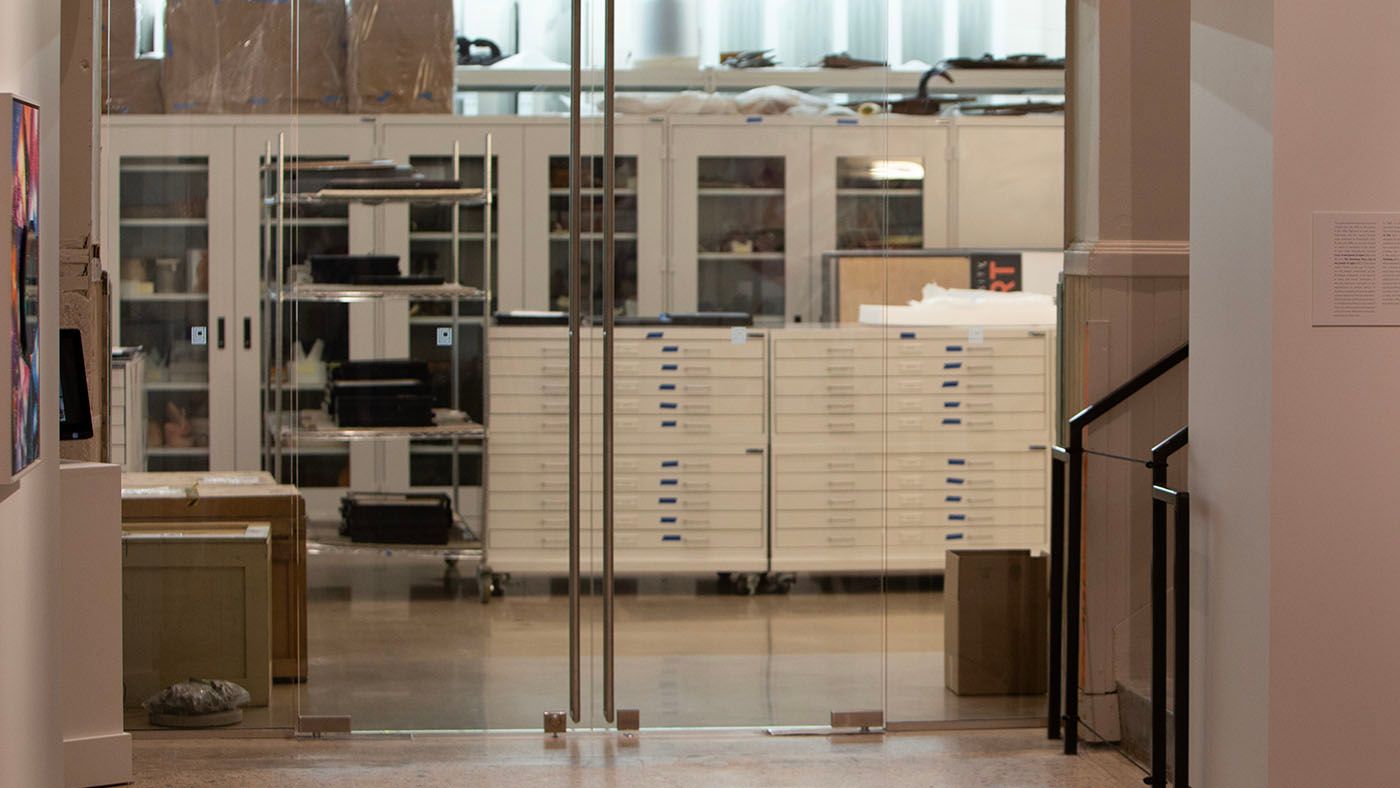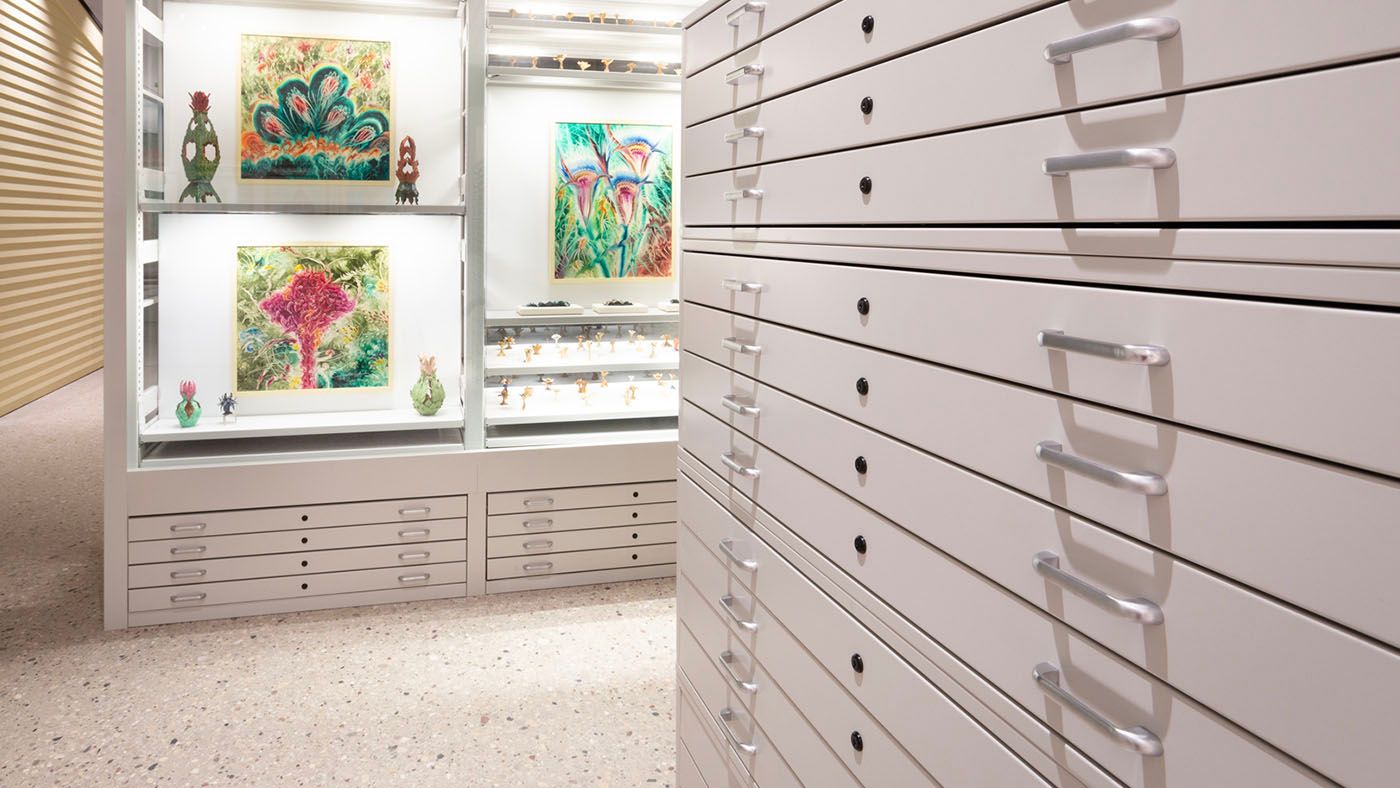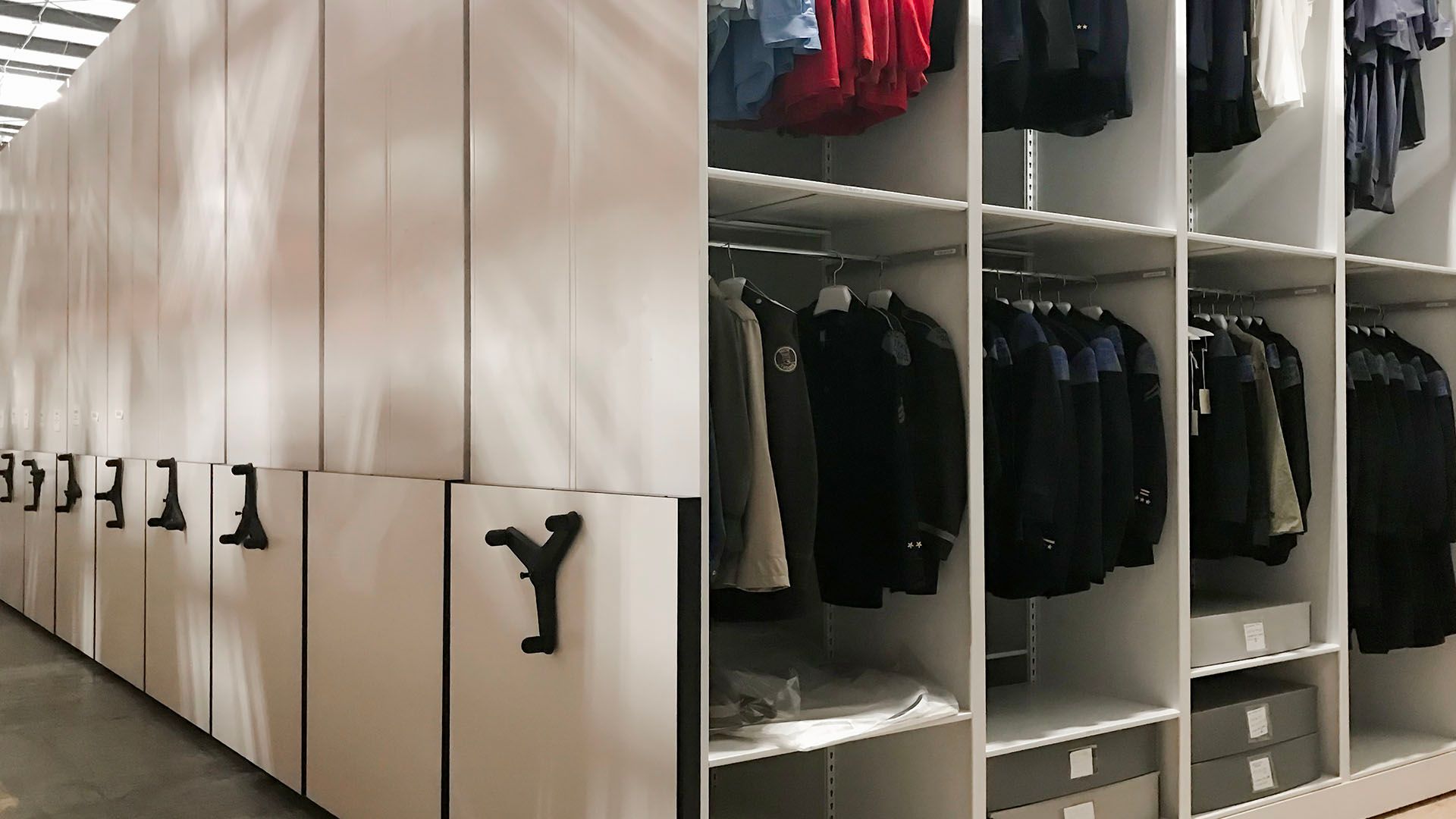Optimize Museum Collections Storage Space
How Spacesaver helps clients design flexible storage solutions.
Museum collections are always growing, and that growth can make it difficult to maintain best practices in collections areas. Clients often call us to optimize space in their collections storage areas so they can make do for another few years — or five or ten — until they can get funding for an expansion or a new building. They’re not sure exactly when a new building will be built, but their collections areas need attention now.
If this sounds familiar, you don’t have to stay in limbo. You can start taking steps today that will optimize your current museum collections storage space, while still keeping an eye toward the future by designing smart systems that can transfer to a new building at a later date. Here’s how:

1. Recover Underutilized Space
While your current collections area might seem like it’s completely full, on closer inspection you’ll probably find there’s underutilized space in the aisles, in corners, above cabinets or shelving, or even in the space between shelves or drawers.
Here’s how it works: in this hypothetical example, replacing inefficient shelving with shelving sized perfectly for archival boxes frees up useful space, without a major building project.

2. Purchase Stationary Shelving and Cabinets Now, Install on Mobile Systems Later
Some clients purchase cabinets and shelving that simply sit on their integrated bases on the floor, with the intention to mount them on compact mobile systems at a later date. This allows clients to responsibly store collections, until investing in equipment that can be incorporated into a renovated facility or new construction.

Your Partner in Collections Care
Your Partner in Collections Care


3. Install Compactors on a False Floor
While its new headquarters was being planned and built, corporate archives for a major athletic apparel firm needed to be housed in a temporary location. Archives staff knew they would be working in the temporary location for ten years or more, so they opted to install Spacesaver compactors with a rail system embedded in a false floor. The entire system was designed to be pulled up and moved into the headquarters at a later date.

4. Configure and Reconfigure
It’s important to estimate how collections will grow and change in the future, but no one knows for sure what their institution will need to store ten or twenty years down the road. Cabinets with adaptable interiors create flexible spaces that can change as collections expand. Spacesaver’s 920 Series Preservation Cabinets can be reconfigured over time to suit the needs of your space and your collection.
Next Up in Museums


Secure and Preserve Your Art Collections with Premium Museum Storage Cabinets
Read On
Storage solutions for preserving historical artifacts in limited spaces.
Read On